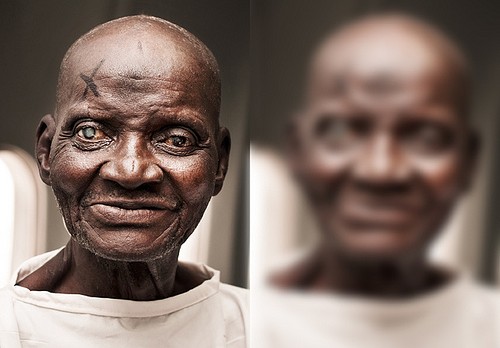
About Cataracts
A cataract is defined as the clouding of the lens of the eye, which leads to a decrease in vision. If left untreated, cataracts can result in permanent blindness. Cataracts are more commonly seen in elderly individuals. With increased age the proteins of the lens start to denature, clouding the lens of the eye. This prevents light from passing normally through the lens of the eye, as it is supposed to. Because of that, new lens cells will form outside of the lens of the eye, and the old lens cells will move more central where they will fully occlude the lens, resulting in cataract.
- Important notification about information and brand names used in this slideshow!
- Photo courtesy of ORBIS EMEA Saving Sight Worldwide by Flickr : www.flickr.com/photos/orbis_emea/8009091277/
- www.rxlist.com/cataracts_slideshow_pictures/article.htm

Symptom : blurry vision
Symptoms of cataracts only appear when the clouding is significant enough to block the passage of light through the lens of the eye. In a normal eye, the light penetrates the eye by passing through the lens. The lens The lens focuses that light into a sharp image on the retina, which relays messages to the brain via the optic nerve. If the lens of the eye is clouded, the image transmitted to the retina cannot be focused, and the patient's vision becomes blurred, fogged, cloudy and filmy.
- Important notification about information and brand names used in this slideshow!
- Photo courtesy of David Panevin by Flickr : www.flickr.com/photos/david_panevin/3325955636/

Symptom : Glare
A glare is defined as difficulty seeing in the presence of a bright light. Cataracts can cause both a discomfort glare (instinctive desire to look away from a bright light source or difficulty in seeing a task) and a disability glare (vision is impaired, but there is no discomfort). Patients may have troubles with indoors lights that were once harmless. Furthermore, patient may experience difficulties driving at night, because of the glare caused by the street lights.
- Important notification about information and brand names used in this slideshow!
- Photo courtesy of Kewal Shah by Flickr : www.flickr.com/photos/10900279@N05/2416947745/

Symptom : Double Vision
With cataracts, images appear double and lack focus, a condition that is medically referred to as "diplopia". Technically, diplopia is defined as the simultaneous perception of two images of the same object. In patients suffering from cataracts, the diplopia is reproducible with both eyes, meaning that the patient sees double images with both eyes, even the one in which the lens is not clouded. This is due to the fact that the proper functioning of both eyes is necessary for visual clarity.
- Important notification about information and brand names used in this slideshow!
- Photo courtesy of Eileen Mundok by Flickr : www.flickr.com/photos/36234367@N00/121567141/
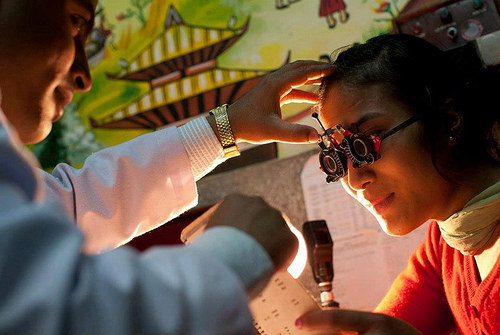
Symptom : Frequent Change Of Eyeglasses
Patients suffering of cataract are very likely to visit the ophthalmologist quite often, and this complaining of several symptoms (and if the patient is already used to have such visits, they become more regular from the onset of the disease). The patient may also experience a recent onset of decrease in visual acuity. This, coupled with the blurry vision, the diplopia and the visual glares could prompt the patient to seek care by an ophthalmologist, and despite the recurrent changes in glasses (or contact lenses), the vision will still fail to improve.
- Important notification about information and brand names used in this slideshow!
- Photo courtesy of ORBIS EMEA Saving Sight Worldwide by Flickr : www.flickr.com/photos/orbis_emea/8746347825/
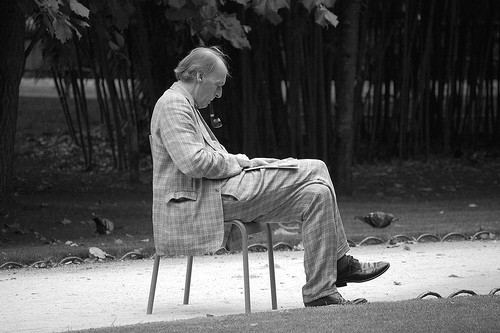
Symptom : Second Sight
A patient with cataract might have the illusion that he/she is able to see close ups better than before. This is due to the fact that the cloudy layer (that causes the cataract) acts as a stronger lens and allows the patient to see objects closer. However, this is just a false impression of good vision, and the patient will notice that as his condition worsens, so does his visual acuity.
- Important notification about information and brand names used in this slideshow!
- Photo courtesy of Thibault Martin-Lagardette by Flickr : www.flickr.com/photos/naixn/1424550275/

Causes Of Cataracts
Cataracts are more common in elderly people, as advanced age is the most important risk factor. However, newborns who do get cataracts do so as a result of a congenital infection (Rubella) or syndrome. In addition, several risk factors could predispose one to developing cataracts, and the common mechanism for all of these risk factors is vascular injury. Risk factors for cataracts include: - Diabetes: may lead to diabetic retinopathy (retinal and lens damages) - Hypertension: could cause vascular occlusion of the retinal artery - Cigarette smoking; - Excessive steroids use, - Skin diseases: because the skin and the lens of the eye have the same embryologic origin (ectoderm) - Blunt trauma to the eye: causes thickening and widening of lens fibers leading to lens clouding; - Genetic abnormalities: 1q21.1 deletion syndrome, Cri-du-chat syndrome, Down syndrome, Patau's syndrome, Trisomy 18 (Edward's syndrome) and Turner's syndrome.
- Important notification about information and brand names used in this slideshow!
- Photo courtesy of ORBIS EMEA Saving Sight Worldwide by Flickr : www.flickr.com/photos/orbis_emea/7773033498/
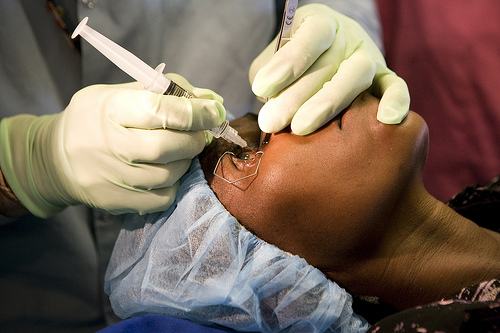
Cataract Surgery
The first attempt to relieve the symptoms of cataracts is through eye glasses prescriptions or contact lenses. However, if the vision lost persists, a corrective surgery should be performed to remove the cloudy lens and replace it with an artificial lens. The surgery is performed under local anesthesia, and has a success rate of 90% ( patients who recover a 20/40 visual acuity or better after the surgery). The newly inserted artificial lens is called an "intraocular lens", and like all others of this type, it is a monofocal lens that corrects for either distance or near vision, in contrast to a multifocal lens which improves both near an distance vision simultaneously, but has a higher rate of transplant failure.
- Important notification about information and brand names used in this slideshow!
- Photo courtesy of ORBIS EMEA Saving Sight Worldwide by Flickr : www.flickr.com/photos/orbis_emea/8747470988/
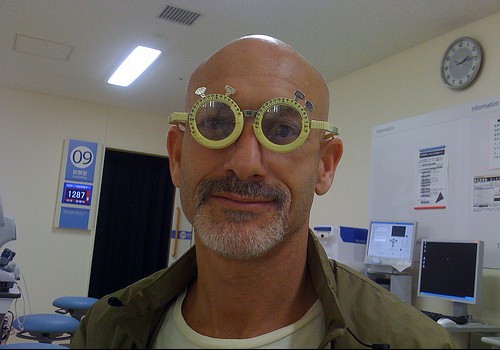
Diagnosing Of Cataracts
The diagnosis of cataract is made with a thorough history and an accurate physical examination of the eye. The Doctor will test the patient's vision and examine his eyes with a slit lamp microscope to look for problems with the lens and other parts of the eye. In order to better examine the back of the eye (where we can see the retina and the optic nerve), the pupils are medically dilated.
- Important notification about information and brand names used in this slideshow!
- Photo courtesy of Barry Silver by Flickr : www.flickr.com/photos/gbsk/4010425929/

Post-Operative Period After Cataract Surgery
For a few after your cataract surgery, your eye may be itchy and sensitive to light. Generally, Doctors prescribe some eye drops to aid in healing, and recommend the wear of an eye shield or glasses for protection. Complete healing of the eye is achieved after about 8 weeks. However, the patient's vision will start to improve soon after the surgery. The patient may still need glasses, at least occasionally, for distance vision or for reading. The patient will also need to renew his eye drops prescription after healing is complete.
- Important notification about information and brand names used in this slideshow!
- Photo courtesy of Alicia by Flickr : www.flickr.com/photos/hvnlydlite/273464767/



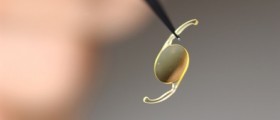
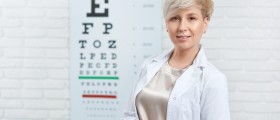
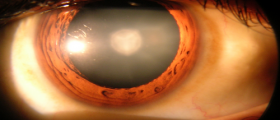

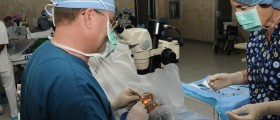


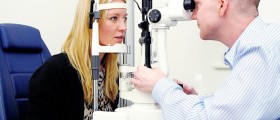
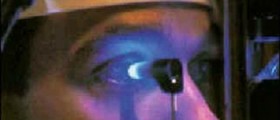
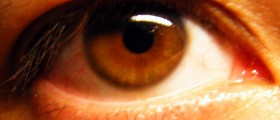
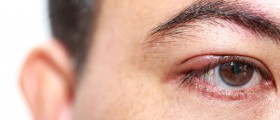


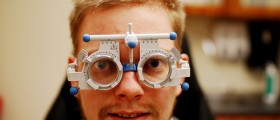
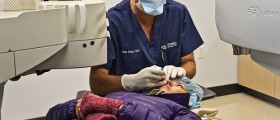
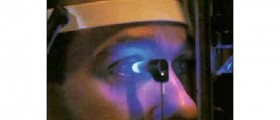







Your thoughts on this
Loading...